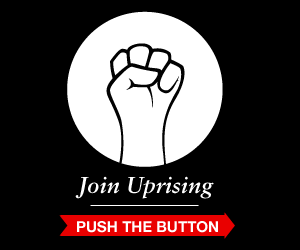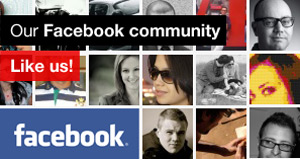Power of the Journey for Social Businesses
Posted on 4th Jul 2012 by Cheryl Burgess in BlogAs we embark on the social journey through the digital bazaar, the line between brands, employees and customers continues to blur. Brands understand this is a time of uncertainty, and some have embraced change more quickly than others. The most alert brands have eagerly jumped into the social branding fray, helping to define exactly what this term means in the process.
Social branding has undoubtedly presented new challenges. As more business have come to adopt this practice, they have also come to realize that to build a truly effective social brand they must build engaged communities from the inside out. In short, a company must learn to evolve into a social business by empowering its employees to become effective brand ambassadors.
Social Collaboration
Successful social branding demands much more from a business than simply pumping countless advertising dollars into digital channels. It’s one thing to bombard potential customers with focused branding through a wealth of digital platforms, but it’s another thing entirely to get those customers to carry that message forward.
However, before a brand can mobilize its customers to carry its message forward, it must first get all its dominoes lined up on the home front. Successful brand advocacy begins with a company’s employees. Brands capitalizing on this tremendous asset are positioning themselves for sustained growth and success.
Why Employees Make the Best Advocates
“Think of a brand as a planet and each employee as a satellite orbiting around it.”
Think of a brand as a planet, and each employee as a satellite orbiting around it. Each satellite is an individual entity unto itself, but all are bound by gravity to something much larger that unites all these separate units into an interactive system. The stronger a brand’s message and goals, the greater pull it has on each employee. The more an employee can identify with the branding message of its employer, the less likely it is to “break orbit,” or go off message.
Adobe has over 2,000 employees engaged in social media. Their concept of a social media policy is more “guard rails” than guidelines. Through internal education they have developed a trusting relationship with employees, according to Maria Poveromo, Director of Social Media Adobe Systems. More executives are realizing the tremendous potential that branding engenders. Colleen Barrett from Southwest Airlines and Tony Hsieh have long been strong advocates for such a system, but others are coming around as well. Take, for example, the AT&T Networking Exchange Blog (AT&T NE blog) Bill Strawderman and Trish Nettleship spearheaded the AT&T NE blog in order to bring the digital voices of employee ambassadors in the public sphere as part of the company’s effort to help foster authenticity. In an eMarketer article, Nettleship said, “The idea is to build thought leadership and engage customers earlier in the research process, as they’re starting to learn about these technologies and how they are going to help their business.” And in the essence of transparency, AT&T is a client of Blue Focus Marketing.
The strong leadership at Adobe has also come to the same conclusion. In a recent Forbes article, Ann Lewnes, SVP of Global Marketing for Adobe, commented, “Adobe made a massive investment to (re)train and reconfigure our team... As our teams gained insight into social and digital, they felt empowered and excited to experiment in these new mediums. Did we have resistance at first? You bet. But we now have an organization full of converts. And once the results started rolling in, and they saw how quantifiable digital made things, our C-suite got on board as well.”
Net Promoter Score – Executive Motivation
One motivation for C-suite executives to become a social business is to increase their company’s Net Promoter Score. In a recent Forbes article, Christine Comaford explores what makes Enterasys successful. In addition to three years of consecutive revenue growth, they earned a net promoter score of 81. Vala Afshar (@ValaAfshar), Chief Customer Officer, Enterasys, is an excellent example of a successful C-level executives who engages customers and community.
Sometimes “Joe” is a Brand’s Best Bet
Brand advocacy, of course, does not end with the employees. As satellites connected to a larger system, their job is then to spread the brand’s message to their own networks, adding personality and character to a brand in ways wholly unique to social media.
That message then becomes available to the Average Joe, who is happy to pick up a brand’s message and distribute it to their own channels—provided, of course, that they are sufficiently convinced of a brand’s authenticity.
According to a recent eMarketer survey, a very large portion of consumers (50 percent) are quite happy to forward a brand’s message simply because they enjoyed their own experience with that brand. Another 37 percent become brand advocates to help friends and family, while only 1 percent do so for personal gain (i.e., rewards, discounts, etc.).
This incredible willingness on the part of the Average Joe to become a brand advocates for little or no extra incentive represents a tremendous resource for companies. As eMarketer writer/analyst Kimberly Maul put it, “Because the average consumer inherently trusts his or her friends and family, a person who is a brand advocate can be highly influential. And advocates are stepping up to that opportunity.”
To generate a strong community of brand advocacy, brands must never forget that the entire enterprise depends on building authentic, natural social relationships. As Nigel Cameron recently remarked in a recent blog post, “The future is social. But that social is not ad-driven, privacy-destroying, IP-wielding, reaping economic profit. It is in general mutualized, open-sourced, and ultimately a thrilling constantly innovating utility environment for much human activity.” Brands that fail to keep this in mind risk a much different effect than the one they intended.
Roadmaps for the Future
As Cameron also mentioned in his post, “In general, this is early early days.” Until recently, resources for building successful social marketing campaigns have been scarce, to say the least.
Kent Huffman’s 8 Mandates for Social Media Marketing Success is a must-read for any brand looking to build a successful social marketing campaign without hitting some stumbling blocks along the way. Kent features AT&T’s NE blog as a corporate success story. As the title suggests, the book features eight key steps—which begin and end with listening—that are key to building a strong core of brand advocates. To illustrate these concepts, Huffman has packed the book full of helpful quotes and real-life examples of success.
In the era of social branding, companies are scrambling to learn how to navigate this new media environment. A brand’s entire reputation can be made or broken overnight as a result of an errant tweet gone viral.
Another book that recently hit the market, Ric Dragon’s Social Marketology: Improve Your Social Media Processes and Get Customers to Stay Forever addresses the ways to strike just the right balance for marketing success.
By skillfully navigating key social concepts and illustrating how they apply to the connected world, Ric Dragon compels businesses to ask tough the questions about their branding strategies. People need to feel comfortable inviting a brand into their homes. However, to even get their foot in the door, Dragon argues, brands need to embody vision, values, and passion. With this book, brands have a comprehensive and easy-to-follow roadmap for success.
Social Journey – From social media to social business
Maria Poveromo in her LeWeb 2012 presentation shares Adobe’s insights on their social journey—both the mistakes they’ve made and how they’ve learned from them. Her presentation highlighted the key need for organization. External success begins with internal harmony. As I wrote in my post in AT&T’s NE blog, “The Rise of Social Business,” “Unless a company communicates well internally, it will not be able to communicate its brands effectively to the public. People don’t think of a brand as a series of departments. Rather, they think of a brand as a whole entity.”
“Brand Heat” – Coming in July on AT&T Networking Exchange Blog
In my upcoming AT&T NE blog in July, “Smartest brands: Innovative Leaders Shape (Not Control) the Path" I will dive deeper into the issue brand advocacy and the ways it can benefit businesses, including insights from Brad Rencher, Sr. VP & General Manager, Digital Marketing – Adobe. Hope you enjoy!
Brand Choreography – Blue Focus Marketing & the AMA | Chicago, Sept. 13-14, 2012
You may wish to read about Blue Focus Marketing’s position on Integrated Marketing Communications that we call “Brand Choreography.” On Sept 13-14, Mark will be conducting a two-day workshop for the American Marketing Association (AMA) in Chicago. This IMC Training Series is designed to help marketing and business professionals develop an IMC roadmap so attendees can leave the workshop armed with strategic advice and a sense of empowerment to move their IMC plans forward. To learn more, go to this link. You can view Mark’s new post, Brand Choreography, on AT&T’s Networking Exchange Blog.
blog comments powered by Disqus







